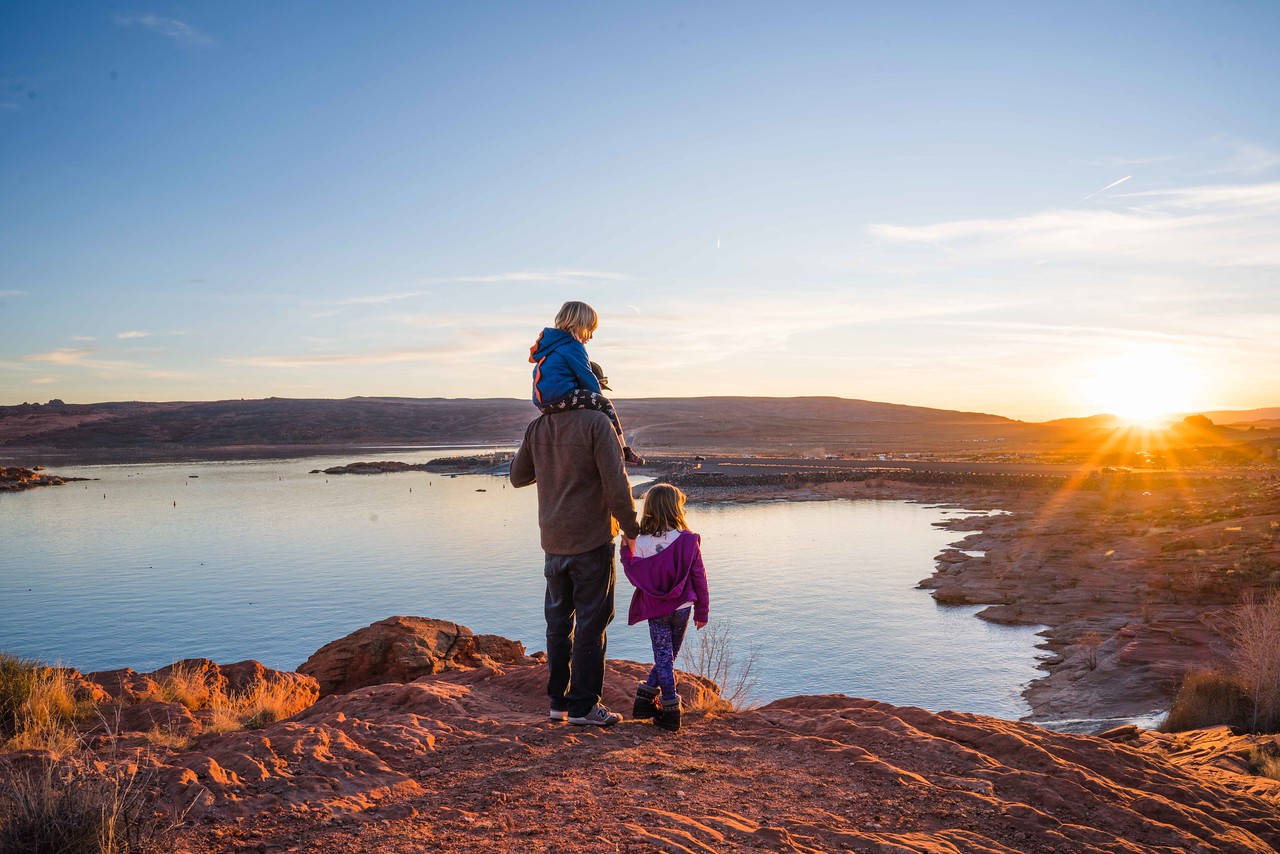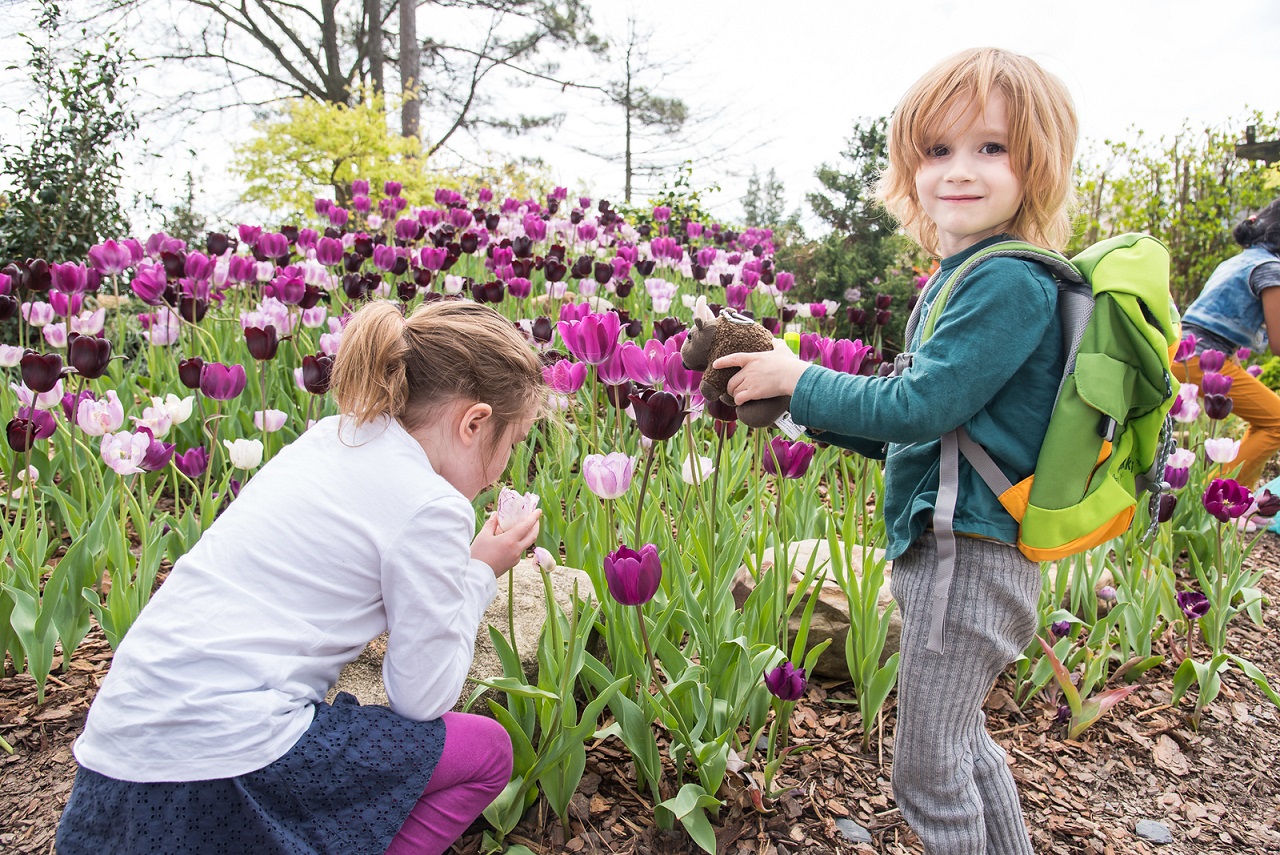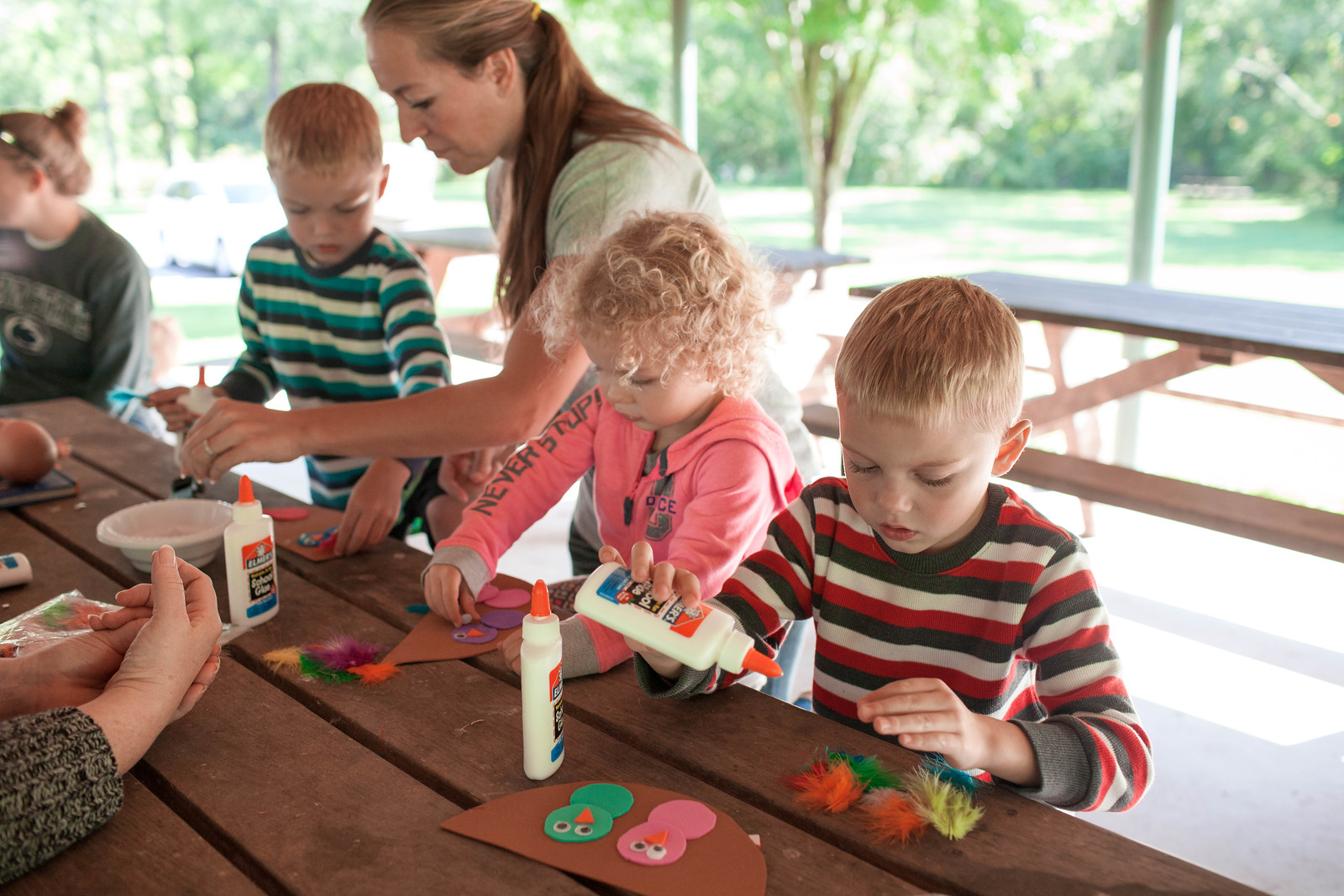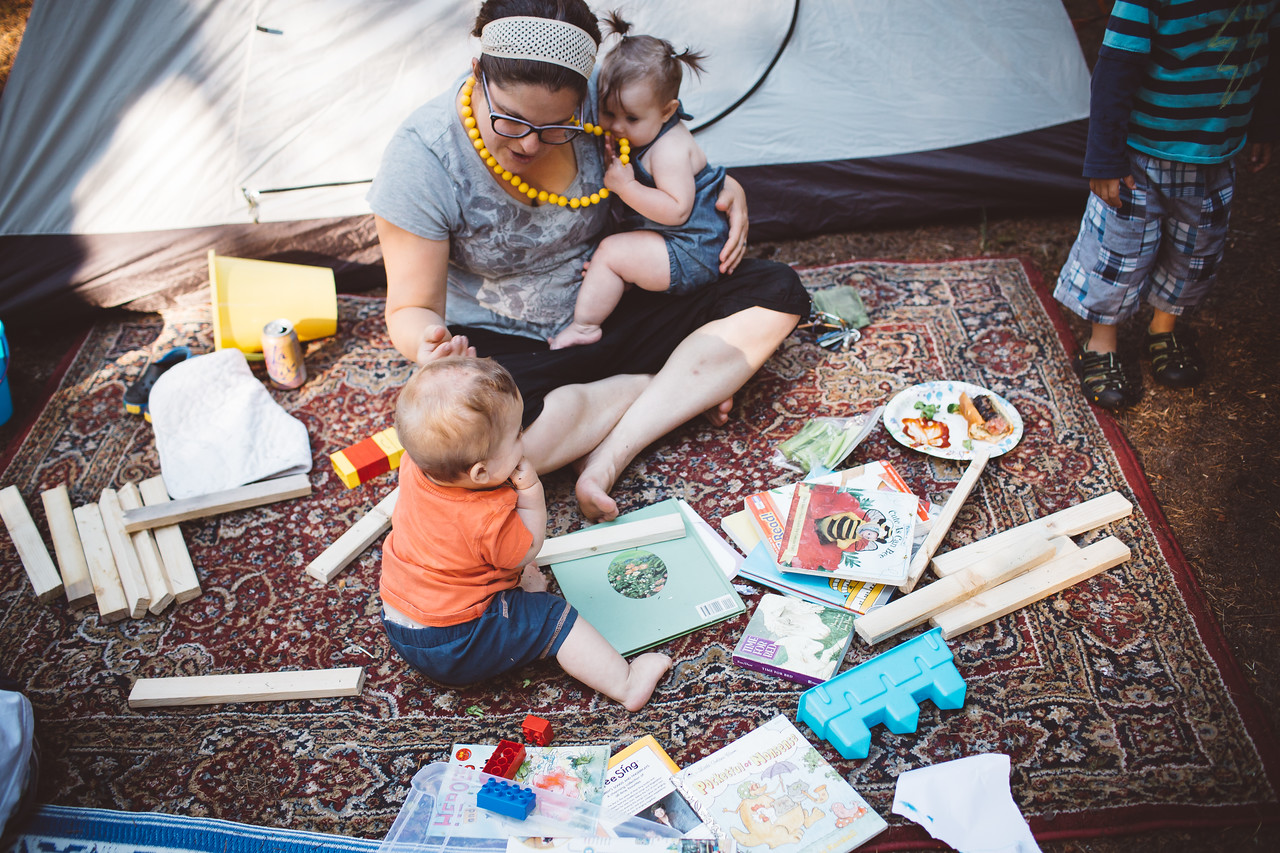
What is the Spring Equinox? Also called the vernal equinox, the spring equinox marks the beginning of spring in the Northern Hemisphere and occurs on March 20 this year. Derived from the Latin term for “equal night,” the equinox marks one of two days throughout the year when the sun shines directly on the equator, making the length of day and night approximately equal.
You made it through another winter, and after months of chilly weather and dressing your kiddos in countless layers to stay warm, the coming of spring is certainly something to celebrate! Read on to discover some activities, craft ideas and books you can use to celebrate the spring equinox with your family.
Activities
1. Play in the mud – Whether you decide to visit a an open space with known mud puddles, a section off an area of your yard for “muddy play,” turn an old plastic container or water table into a mud bin, or go all out and create a mud kitchen (such as
this one), nothing says spring like playing with mud!
2. Plant new vegetation – Whether your region is ready for outdoor planting or you start some new buds inside while you wait for the ground to thaw, starting new seedlings are a great way to bond as a family and create something that you can watch grow throughout the season.
3. Go on a “Signs of Spring” family hike – Encourage your littles to search for new grass shoots, buds on trees, listen for the sound of birds, etc. Don’t live in an area that is seeing these signs yet? No problem! Talk about what changes spring will bring and how the trail will look different as the season changes.
 4. Clean-up hike
4. Clean-up hike – Take “spring cleaning” to the next level and help clean up a trail. You can bring bags/containers along with gloves and pick up any trash/recyclables you find on the trail. This helps create a fresh beginning for the new season. Check out these tips for
how to clean up a trail safely with your family.
5. Create a spring nature table – Creating a space where your kids can place items that represent or remind them of spring is a great way to celebrate the coming of this new season! There is no wrong way to create a nature table. It can be as small or big as you want, and the items that you place on it can vary wildly. From a fresh herb garden, to spring crafts, to a rubber duck “pond” made with leftover blue cloth and fun rocks found on a nature hike, any items that remind your family of the growth and renewal of spring will work!
Craft Ideas
1. Create seed bombs – This easy activity only requires a few ingredients and can add life to your garden.
Seed bombs make great gifts for others and help liven up a nearby park. Just be sure to only use seeds of plants that are native to your area. This prevents invasive species from taking over!
2. Make “Grass Heads” – These adorable critters require few materials and grow quickly, providing the perfect gardening project for even the littlest learners. You can make them with
eggs or get even more creative with
other animals, trimming the “hair” as it grows.
3. Make a bird feeder – Entice the birds to come back from their winter vacation by making bird feeder crafts. Check out this article on how to make three fun bird feeders to make with your family. Or make birds out of paper and have the kiddos glue feathers for some added fun.
For more fun craft and activity ideas for spring, check out
this article.

Spring Book to read
As the saying goes, “A picture is worth a thousand words.” These beautifully illustrated books help children of all ages understand what happens as winter turns to spring and the earth “awakens” to new plant growth.
Birth – 3 years
Planting a Rainbow, by Lois Ehlert
The vibrant illustrations in this book teach young readers about colors and flowers along with the planting of bulbs and seeds. It is available in both a board book version for the youngest readers and a longer version for preschoolers.
The Tiny Seed, by Eric Carl
Follow the life cycle of a flower as a tiny seed grows into a giant, beautiful flower. This book is available in both a board book version for the youngest kiddos along with a hardcover, longer version for older children.
When Spring Comes, by Kevin Henkes
Readers of all ages will enjoy the striking imagery of this book. It introduces the basic concepts of language and the changing of the seasons. It is available in a board book version for the youngest readers along with a longer version for older children.
4 years and up
A New Beginning – Celebrating the Spring Equinox, by Wendy Pfeffer
This book explains the science behind spring and shows how the annual “rebirth” of Earth has been celebrated by various cultures throughout the ages and the world. Hands-on activities are included to help understand and demonstrate how different cultures celebrate the coming of spring.
And Then it’s Spring, by Julie Fogliano
Follow the tale of a young boy and his dog as they plant a garden, saying goodbye to the dull brown of winter and welcoming the new life of spring. With beautiful illustrations by Erin E. Stead, this book will make you want to dust off the yard equipment and get started on your own garden!
Abracadabra, It’s Spring! by Anne Sibley O’Brien
Readers discover what the new season holds as the snow melts, trees bud and eggs hatch. Celebrate the magic of nature and the changing of seasons with this gorgeously illustrated book!
You can find more garden-themed book recommendations for kids
here.
 Does your family celebrate the coming of spring on the equinox? Let us know how in the comments below!
Does your family celebrate the coming of spring on the equinox? Let us know how in the comments below!
Read more:
Photos by Arika Bauer, Melissa Hollingsworth, Kendra Reeder and Ashley Scheider.
 What is the Spring Equinox? Also called the vernal equinox, the spring equinox marks the beginning of spring in the Northern Hemisphere and occurs on March 20 this year. Derived from the Latin term for “equal night,” the equinox marks one of two days throughout the year when the sun shines directly on the equator, making the length of day and night approximately equal.
You made it through another winter, and after months of chilly weather and dressing your kiddos in countless layers to stay warm, the coming of spring is certainly something to celebrate! Read on to discover some activities, craft ideas and books you can use to celebrate the spring equinox with your family.
What is the Spring Equinox? Also called the vernal equinox, the spring equinox marks the beginning of spring in the Northern Hemisphere and occurs on March 20 this year. Derived from the Latin term for “equal night,” the equinox marks one of two days throughout the year when the sun shines directly on the equator, making the length of day and night approximately equal.
You made it through another winter, and after months of chilly weather and dressing your kiddos in countless layers to stay warm, the coming of spring is certainly something to celebrate! Read on to discover some activities, craft ideas and books you can use to celebrate the spring equinox with your family.
 4. Clean-up hike – Take “spring cleaning” to the next level and help clean up a trail. You can bring bags/containers along with gloves and pick up any trash/recyclables you find on the trail. This helps create a fresh beginning for the new season. Check out these tips for how to clean up a trail safely with your family.
5. Create a spring nature table – Creating a space where your kids can place items that represent or remind them of spring is a great way to celebrate the coming of this new season! There is no wrong way to create a nature table. It can be as small or big as you want, and the items that you place on it can vary wildly. From a fresh herb garden, to spring crafts, to a rubber duck “pond” made with leftover blue cloth and fun rocks found on a nature hike, any items that remind your family of the growth and renewal of spring will work!
4. Clean-up hike – Take “spring cleaning” to the next level and help clean up a trail. You can bring bags/containers along with gloves and pick up any trash/recyclables you find on the trail. This helps create a fresh beginning for the new season. Check out these tips for how to clean up a trail safely with your family.
5. Create a spring nature table – Creating a space where your kids can place items that represent or remind them of spring is a great way to celebrate the coming of this new season! There is no wrong way to create a nature table. It can be as small or big as you want, and the items that you place on it can vary wildly. From a fresh herb garden, to spring crafts, to a rubber duck “pond” made with leftover blue cloth and fun rocks found on a nature hike, any items that remind your family of the growth and renewal of spring will work!

 Does your family celebrate the coming of spring on the equinox? Let us know how in the comments below!
Does your family celebrate the coming of spring on the equinox? Let us know how in the comments below!




Comments